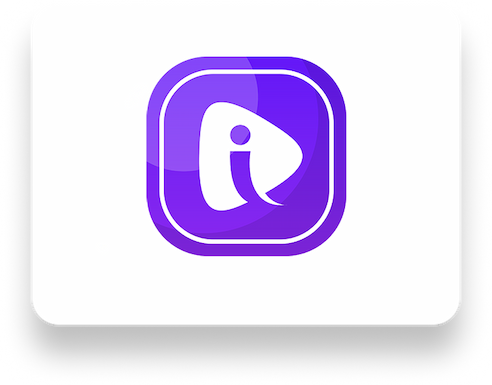There is no single algorithm on Instagram — the social network uses many algorithms, classifiers, and processes, each of which pursues its own goal. According to Adam Mosseri, users interact with different parts of the app in different ways: they follow their closest friends in stories, use the Explore tab to find new content and its creators, and have fun on Reels. That's why each section of Instagram — feed, stories, Explore, Reels, search, and more — uses its own algorithm adapted to it.
How the Instagram Feed Algorithm Works
The Instagram feed consists of a mixture of recently published content from the accounts you follow, suggested content from accounts you might like, and ads. Formats are also mixed — these can be videos, photos, and carousels.
The work of any ranking algorithm is divided into stages, Adam Mosseri emphasized. Instagram determines what a user might be interested in based on a variety of factors, including what and who you follow, what you've liked, or who you've recently interacted with.
The social network personalizes the feed to try to find a balance between content from accounts you follow and content from accounts you don't follow that you may be interested in.
Instagram then uses all available information about what was posted, the people who posted those posts, and the user's preferences to rank the personalized content that was curated. The social network has also begun to take into account other factors, such as format — if a user prefers photos, Instagram will show them more photos.
Factors influencing recommendation algorithms are called "signals" on Instagram, and there are thousands of them. They include everything from when the post was published and whether you use the app or web version of the social network, to how often you like the videos.
The top signals for Instagram feed algorithms in order of importance are:
- User activity. The social network decides what you might be interested in based on your likes, comments, shares, and saves.
- Post Information. These are signals of how popular a post is — how many people liked it and how quickly people like, comment, save, and share the post.
- Information about the author of the post. Helps algorithms understand how interesting a creator might be to you, and includes signals such as the number of times users have interacted with that author in the past few weeks.
- The history of the user's interaction with another user. The social network analyzes how interested you are in viewing posts from a particular author — for example, whether you comment on each other's posts.
From these signals, Instagram algorithms form a set of predictions about the likelihood of a particular user interaction with a post. There are "about ten" of them for the feed, of which the five most important are: viewing time, commenting, liking, sharing, and going to the profile. The more likely a user is to take action on a particular post, the higher the user will see it in the feed.
Instagram also tries not to show too many posts in a row from the same person in the feed, too many recommended posts in a row, and demotes content that could potentially violate the principles of the Community Guidelines (it can be removed after review).
How Instagram's Discover Algorithm Works (Explore)
The Explore tab has been designed to help users discover something new for themselves. The section grid consists of recommended photos and videos that Instagram selects itself. This is the content of accounts that the user has not yet subscribed to.
First, the social network determines a set of posts for ranking, for this the algorithms look at the past actions of users - likes, saved, published and commented posts.
As soon as Instagram selects a group of photos and videos that a user may be interested in, it arranges them based on your predictions of your interest in each of the posts (similar to ranking the content of the feed and stories).
The main signals for the algorithms of the "Interesting" tab, in order of importance, are:
- Post Information. How popular the post is – the algorithm analyzes the number and speed of likes, comments, reposts, and saves of the post. These signals are much more important in Interesting than in the feed or stories.
- User activity in Explore. Instagram analyzes the posts you've liked, the posts you've saved, shared, or commented on, and how you've previously interacted with posts in Explore. The social network tries to show the user more content similar to the one they interacted with.
- The history of the user's interaction with the author of the post. Most likely, the authors of the recommended posts are not familiar to you. But if you've interacted with them before, it gives Instagram an idea of how interested you might be in their content.
- Information about the author of the post. It helps to find interesting content from a wide range of people. For example, it's data on how many times users have interacted with a content creator in the past few weeks.
How the Reels algorithm works
Instagram's short videos are designed to open up new things, with a focus on entertainment, noted Adam Mosseri. Most of the Reels on offer are content from accounts you don't follow. First, the social network selects videos that the user can potentially like, and then ranks them depending on how interesting they are, according to the algorithm's conclusions.
The most important thing in predicting user activity is the likelihood that you'll reshare the video, watch the video to the end, like it, and go to the audio page (as an indirect indication of whether you'll be inspired to create your own video).
To find entertaining videos, Instagram asks users if they think a particular video is entertaining and worth the time spent on it, and learns from reviews to better understand what will entertain people.
The main signals for Reels algorithms in order of importance are:
- User activity. The social network analyzes the videos that you liked, saved, commented on, shared, and recently interacted with. These signals help Instagram understand what kind of content a user might like.
- The history of the user's interaction with the author of the video. Most likely, the Reels video was filmed by someone you don't know. But if you've interacted with video creators before, it gives the social network an opportunity to understand how interested you might be in their content.
- Information about the video. This includes data about the content of the video, such as the audio track or visual effects, as well as the popularity of the video.
- Information about the author of the video. Instagram takes into account the number of followers or the level of engagement of the audience to help find interesting content from a wide range of creators and give each creator a chance to find their audience.
The visibility of which content decreases in the Reels search results
Short Reels are subject to the rules of Instagram's recommendation system (see above in the section on algorithms in the "Interesting" tab). In addition, Instagram aims to make Reels less visible:
- with low resolution or with watermarks (like the TikTok logo on the video uploaded from there.
- with muted sound or frames,
- consisting mainly of text,
- with political content,
- that have already been posted on the social network.
How the Story Algorithm Works
Instagram Stories are a way to share everyday moments. Stories that a user sees consist of content from the people they follow and ads.
To rank them, Instagram first detects all stories from the accounts you follow and removes those that violate the Community Guidelines. Then, based on various signals, the social network creates forecasts about the relevance and value of stories for the user. Depending on the probability that you will look at the stories, reply to them, and move on to the next one, the algorithm will determine which ones will be displayed first.
The main signals for Instagram Story ranking algorithms:
Story views. Based on information about how often a user views a particular account's stories, Instagram prioritizes the stories of accounts whose stories the user would not like to miss.
Interaction history. It shows how often you interact with stories of a particular account, for example, like them or send a message to Direct.
Proximity. The algorithm analyzes your relationship with the author in general and the likelihood that you are friends or relatives.

